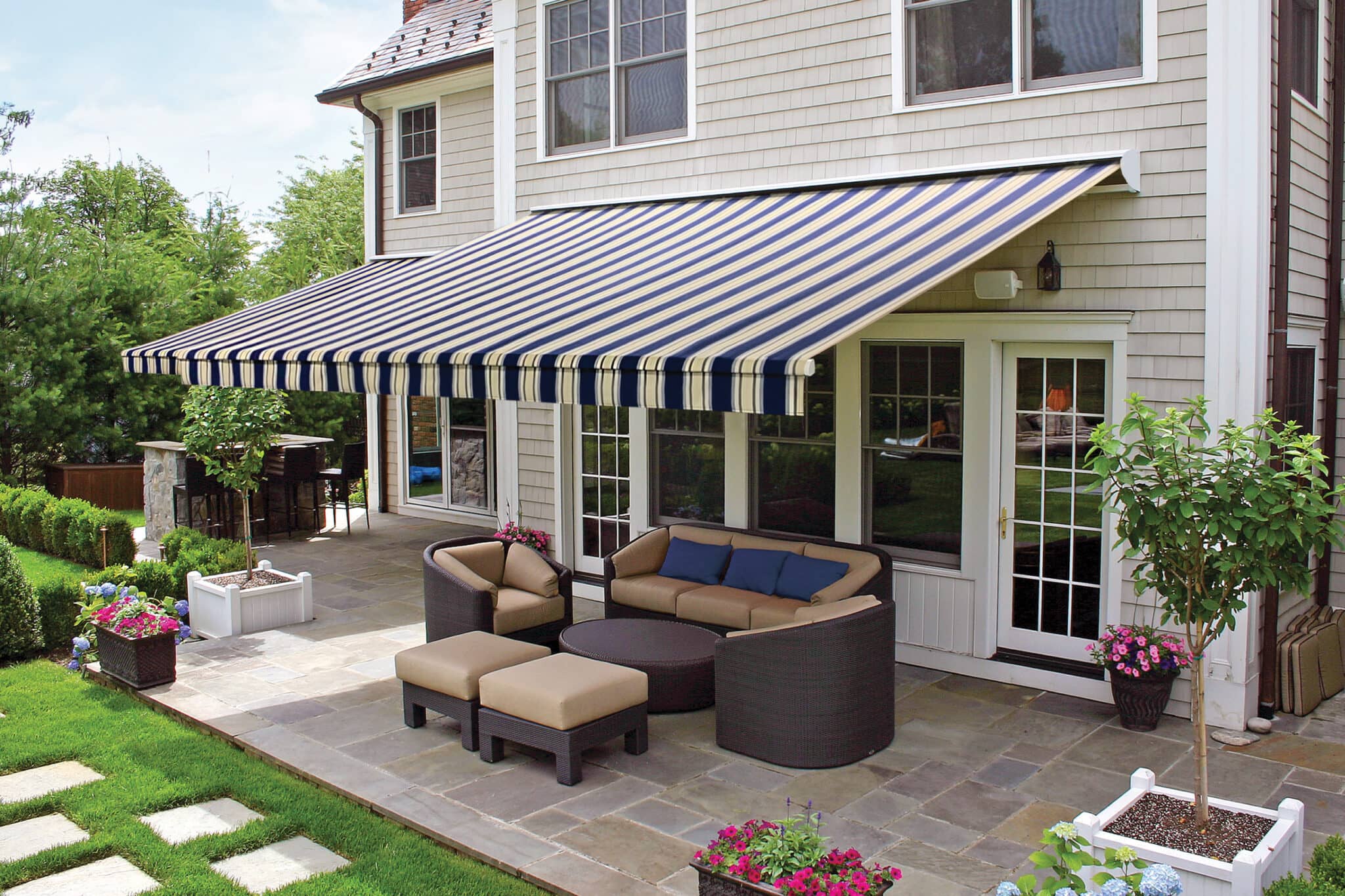Now is the time of year when outdoor awning owners must prepare their awnings for Easter breaks; perhaps your current setup doesn’t look its best? Our tips & tricks below can provide your outdoor awning with proper care so it can work its best and last as long as possible!
Tips to Maintain Clean Awnings

Maintaining your awning has never been simpler with these helpful hints and advice for simple maintenance.
- Build Your Cleaning Solution – To create the optimal solution, we advise using warm soapy water along with sponge, soft bristle brush or cloth as your primary tools for cleaning. Harsh chemicals could damage Stoch Guard & Teflon coatings on the awning surface and should therefore not be used when cleaning it.
- Sweep away debris – Any loose sticks and leaves could compromise the integrity of your awning and lead to structural failure.
- Gently wipe down your awning fabric, frame, and cassette – take your time & do not rub too vigorously against its fabric surface!
- Allow Your Awning To Dry Naturally – Before retracting the awning back in, please ensure the fabric has dried completely to avoid moisture being trapped inside which could potentially lead to rust and mould growth.
Alternately, spot cleaning your awning from time to time may also help as bird droppings, tree sap, oil spillage and paint splashes all can leave visible marks on its fabric surface.
How frequently should I clean my awning?
At least twice every year, we advise cleaning your awning to keep it looking its best! For best results we suggest giving it the special care required in order to preserve its appearance all year-long!
When should I remove my awning valance?
As your fabric is protected against weather hazards, however, valances aren’t and may become mouldy or damaged over time. We suggest taking steps during winter to roll up and store them until spring when putting back onto walls again.
How can I remove an awning valance?
- Roll out the awning about 1 to 2ft so that the end caps on its front profile (the metal-curved bar where main fabric attaches as it unfolds forward) become visible. This should ensure maximum shade from UV rays during daylight hours and night-time hours.
- On each end of a profile bar there is a plastic cap covering its entirety; these must be gently but firmly removed (they feature two lugs that engage into the main bar via push fitting, so must be gently pulled back out again after pushing in. Our fitters may suggest using a small piece of wood placed against the inside of each cap with gentle tapping by hammer if they become difficult). Our fitter suggests tapping this method regularly on both caps until both caps have been successfully taken out – then repeat this procedure on both ends!
- There is a small transport screw securing each side of the valance to each frame and both must be removed prior to taking further steps to take down.
- Now carefully slide out the end of the valance (including its rubber tube component). Roll up and store in somewhere dry over winter.
- Replace both end caps on to an awning when correctly in position and move back the awning in for storage. Check that both caps are as tightly in position on their bars as possible when closed; there will not be much wiggle room between caps and the body when fully extended; otherwise it could result in incomplete closure or cause permanent damage to them.
My remote’s battery has died – what should I do next?
Remote controls for awnings contain button cell batteries which may need replacing periodically; you can purchase these at large supermarkets or online. Unfortunately, we don’t stock or cover this cost under your guarantee agreement.
Our experts are only a call or click away! Call 7038563190 with any queries about your awning; alternatively, click here to contact us.
